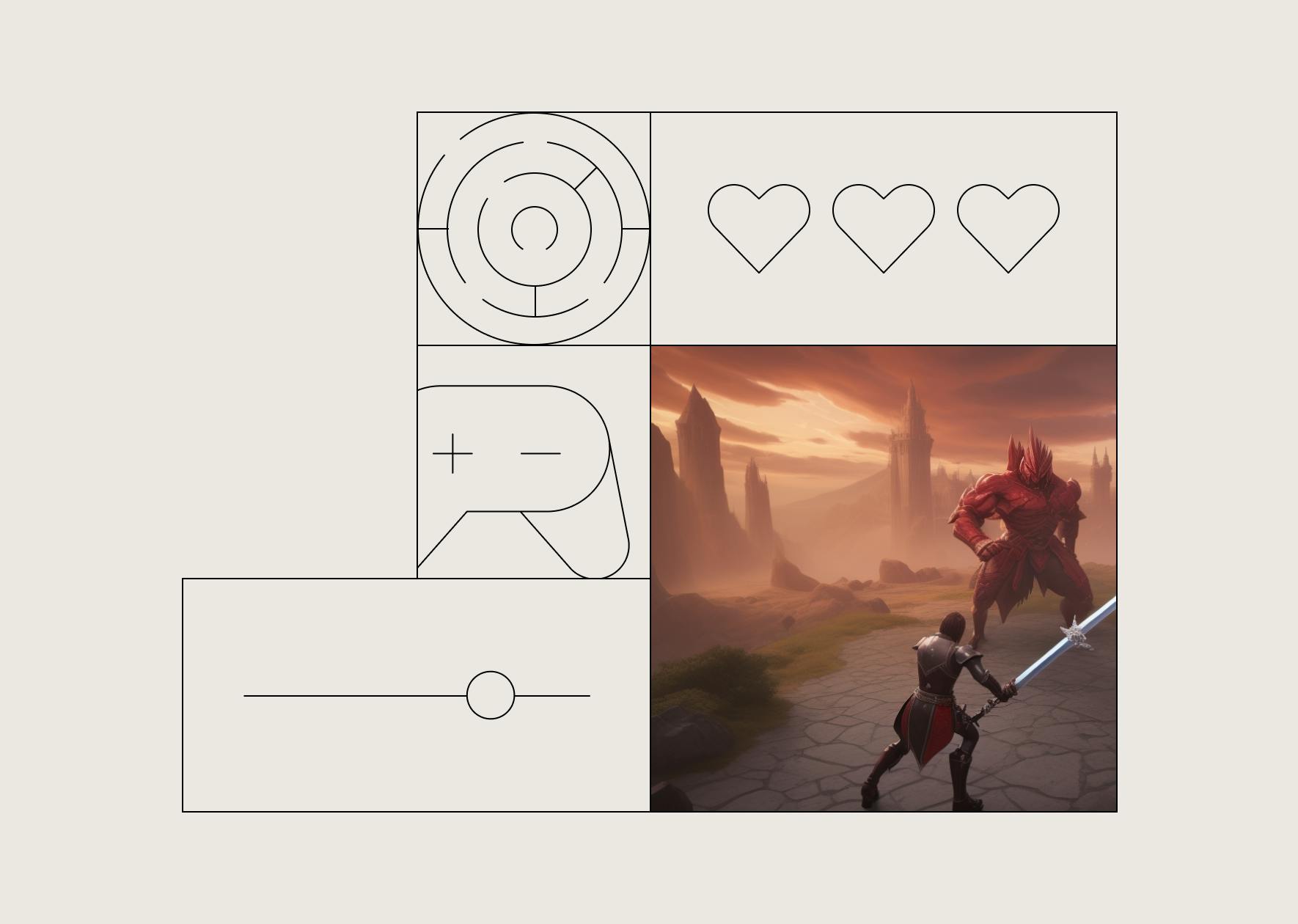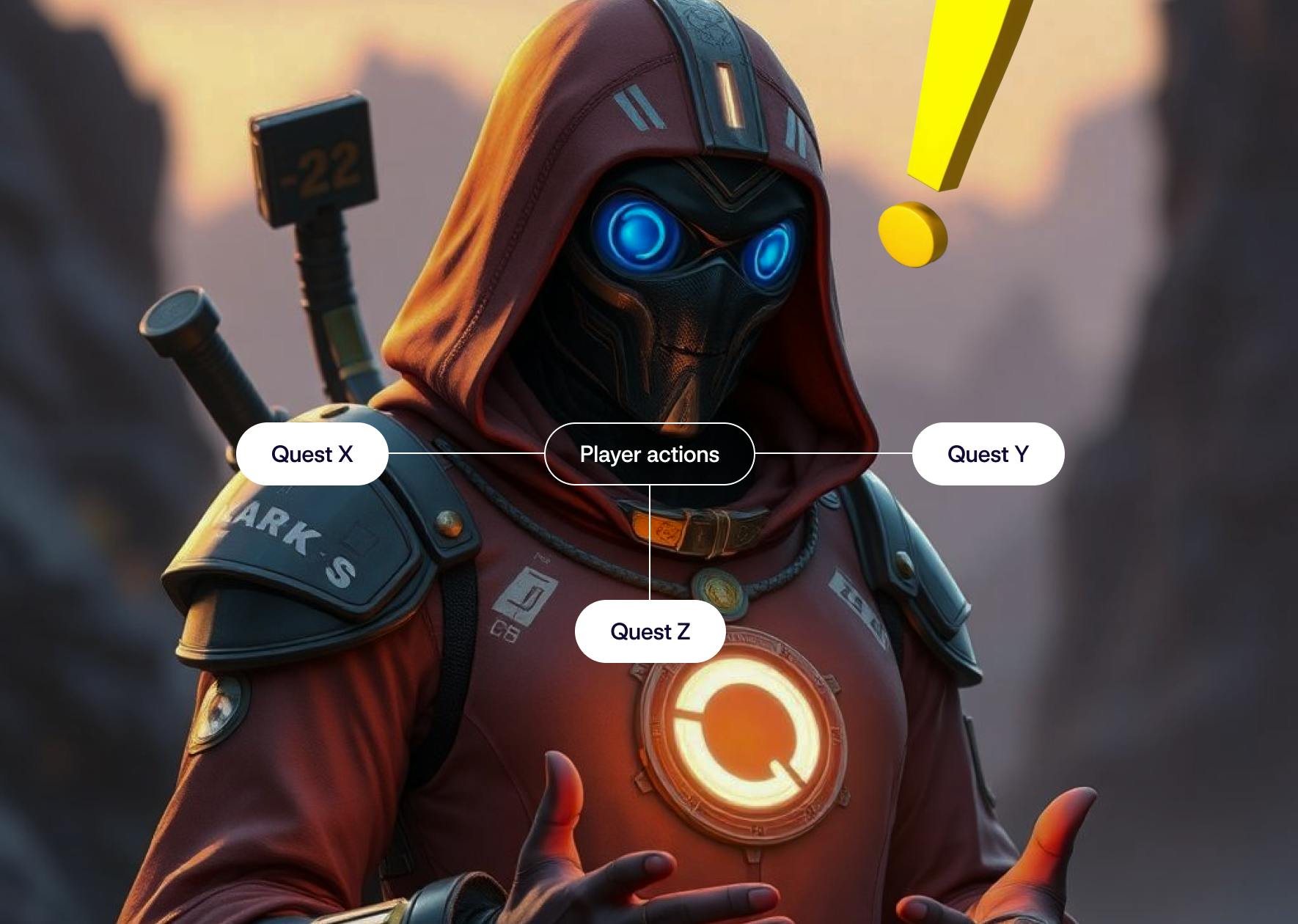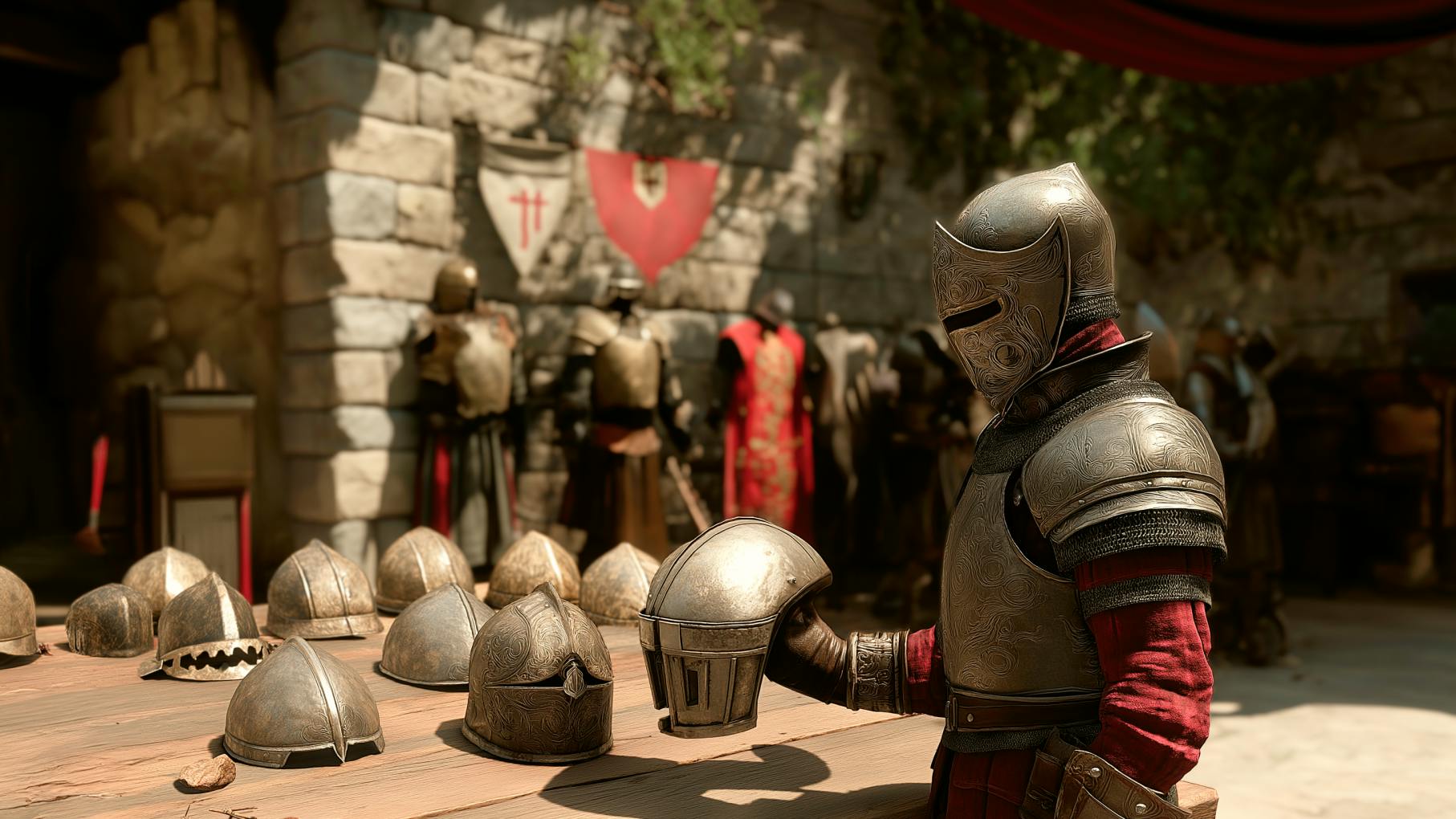Leverage AI for user generated content for gaming
Empower your players to create UGC content for your games with Inworld. From allowing players to create customizable AI NPCs to personalized quests powered by AI agents, AI UGC gaming content helps boost engagement and replayability.
Get started with Inworld

Why AI UGC
Why use AI for UGC in gaming
- Democratize UGC gaming content: Inworld AI helps democratize UGC through user-friendly pipelines for the creation of custom AI characters, AI agents, and storylines.
- Support impactful UGC: AI agents help create UGC content that has a great impact on the game. From adding new enemies to personalizing storylines, Inworld facilitates UGC gaming content that leads to longer playtimes.
- Give players what they want: 99% of gamers believe that AI NPCs would improve their gaming experience in some way. Give your players the power to add truly dynamic NPCs.

Ways to use
4 ways to use Inworld for gaming content creation
- AI NPCs: Give players the ability to create custom AI NPCs. From companions to enemies to random villagers, gamers can have the power to customize all NPCs in the game world.
- Narrative and quest generation: Allow players to create their own storylines and quests with the help of narrative AI agents.
- Environmental generation and control: Let gamers generate new objects or control those objects in new and exciting ways through UGC powers.
- Expansion packs: Streamline your development process and generate more interactive content for your players with AI agents.

Ways to use
5 AI user generated content examples
- AI companions: Allow players to customize their companion’s personalities, interests, and traits to improve their enjoyment of the game.
- AI enemies: Enable the creation of complex or funny enemies for players to face off with in the game.
- AI quests: Allow players to create their own quests based on the scenarios and storylines that interest them most.
- AI storylines: Support more player agency by allowing players to co-create storylines in the game with the help of Inworld’s UGC capabilities.
- AI powers: Give players the ability to create creative new game mechanics like using voice commands to control all animals or summoning all swords in the environment.

What are the benefits of user generated content in gaming?
- Improve metrics: Improve key gaming metrics like replayability, engagement, and gamer sentiment with user created content.
- Increase revenue: Monetize the creation of UGC AI NPCs and AI agents via in-game purchases, subscriptions, or marketplaces to generate an additional revenue stream.
- Support your community: Games that have an active UGC community have higher DAU and more loyal communities. Build an evergreen audience with AI UGC capabilities.

Opportunities for UGC revenue
- In-game purchases: Monetize your Inworld UGC capabilities via in-game purchases giving players access to AI agents and AI NPCs.
- Subscriptions: Sell more subscriptions by ensuring your live service player-based is more engaged or sell a subscription to Inworld’s UGC capabilities.
- Marketplaces: Allow UGC creators to sell their creations to other players.
- Expansion packs: Add Inworld UGC content creation to your expansion packs to increase sales and improve replayability.
- In-game ads: Leverage the increases in engagement and DAU to monetize with in-game advertising.
Frequently asked questions
What is user generated content?
User-generated content (UGC) refers to any content – such as levels, maps, characters, items, or modifications – created by players or users of a video game rather than the game's developers or designers.This can be as simple as creating new character skins for beloved NPCs to customizing the personality of an AI NPC using the capabilities of Inworld’s AI Engine.
Why is user generated content so important?
UGC is so important because it extends the lifespan and replayability of games significantly. It allows players to create personalized experiences, fosters community engagement, and reduces development costs for game companies by ensuring players create a stream of additional content for other players to enjoy.
How to become a user generated content creator?
To become a UGC creator, start by learning about the UGC tools and platforms supported by the game you're interested in. Familiarize yourself with modding tools, level editors, or scripting languages if applicable. Join forums, communities, or workshops where UGC creators share tips and collaborate.
How to encourage user generated content?
Game developers can encourage UGC gaming content by providing accessible modding tools, supporting community forums, hosting contests or challenges, showcasing exemplary user creations, and integrating user-generated content into official game content where possible.
One great way to encourage UGC content is to give gamers access to an AI Engine like Inworld’s to customize AI NPCs or to create new quests and stories.
How to get started with user generated content?
To get started with user generated content, start by researching the game's modding capabilities or UGC guidelines provided by the developers. Experiment with basic tools and tutorials provided by the community or official channels to understand the creation process.
Creating UGC content that’s in high demand like new skins for player characters or AI NPCs might be an easy way to get started.
How to sell user generated content?
Selling user generated content in games typically involves platforms like Steam Workshop for PC games or console-specific marketplaces where users can upload and monetize their creations according to the platform's policies and revenue sharing models. For example, Minecraft offers its marketplace for buying and selling UGC assets and content.
What is an example of user generated content?
A classic example of user generated content in games is the Steam Workshop for games like Skyrim or Cities: Skylines, where players can create and share mods ranging from new quests and characters to entire gameplay overhauls.
How to moderate user generated content?
Moderating user generated content can involve a number of strategies including establishing clear community guidelines, employing automated filters for inappropriate content, having community moderators, and allowing players to report problematic UGC. Developers should regularly review and enforce these guidelines to ensure UGC doesn’t violate their game’s terms of service.
What is UGC in video games?
In video games, UGC refers to player-created content that expands or modifies the game beyond what is initially provided by the developers.
This can include new levels, assets, characters, or even entirely new game modes. UGC games are known to boost gamer engagement since it adds customization options and improves the game’s replayability.
What are examples of UGC games?
A few great examples of UGC games include Minecraft, Roblox, and games like Fallout 4 and The Sims series with strong modding support and UGC creator community.
Games that center and support UGC gaming content often have dedicated communities and more engagement.
How to make UGC?
How to make UGC gaming content can greatly vary by game but generally involves using provided tools such as level editors and scripting languages or modding software compatible with the game to create UGC assets and experiences. Learning basic programming or 3D modeling skills can also be beneficial depending on the complexity of the UGC.
Games can also support the creation of UGC by integrating software and capabilities that allow players to customize and even potentially sell game assets. For example, games might support the ability of players to easily create or customize AI NPCs using Inworld AI Engine.